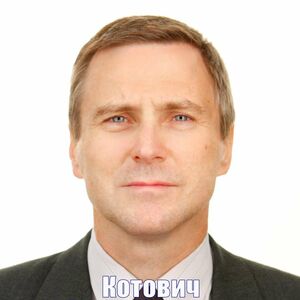13842-1 (661307), страница 2
Текст из файла (страница 2)
We should note that Rheticus was a Protestant, so in those troubled times of the Reformation he took somewhat of a risk visiting a Catholic stronghold. In September 1539 Rheticus went to Danzig, visiting the mayor of Danzig, who gave him some financial assistance to help publish the Narratio Prima or, to give it its full title First report to Johann Schöner on the Books of the Revolutions of the learned gentleman and distinguished mathematician, the Reverend Doctor Nicolaus Copernicus of Torun, Canon of Warmia, by a certain youth devoted to mathematics. The publication of this work encouraged Copernicus to publish the full mathematical details of his theory which he had promised 27 years earlier. Swerdlow writes:-
Copernicus could not have asked for a more erudite, elegant, and enthusiastic introduction of his new astronomy to the world of good letters; indeed to this day the "Narratio Prima" remains the best introduction to Copernicus's work.
In his First Report Rheticus wrote about Copernicus's way of working (see ):-
... my teacher always had before his eyes the observations of all ages together with his own, assembled in order as in catalogues; then when some conclusion must be drawn or contribution made to the science and its principles, he proceeds from the earliest observations to his own, seeking the mutual relationship which harmonizes them all; the results thus obtained by correct inference under the guidance of Urania he then compares with the hypothesis of Ptolemy and the ancients; and having made a most careful examination of these hypotheses, he finds that astronomical proof requires their rejection; he assumes new hypotheses, not indeed without divine inspiration and the favour of the gods; by applying mathematics, he geometrically establishes the conclusions which can be drawn from them by correct inference; he then harmonizes the ancient observations and his own with the hypotheses which he has adopted; and after performing all these operations he finally writes down the laws of astronomy ...
While living with Copernicus, Rheticus wrote to several people reporting on the progress Copernicus was making. For example on 2 June 1541 Rheticus wrote that Copernicus :-
... is enjoying quite good health and is writing a great deal ...
while he wrote that on 9 June Copernicus :-
... had finally overcome his prolonged reluctance to release his volume for publication.
By 29 August De revolutionibus orbium coelestium was ready for the printer. Rheticus took the manuscript with him when he returned to his teaching duties at Wittenberg, and gave it the printer Johann Petreius in Nürnberg. This was a leading centre for printing and Petreius was the best printer in town. However, since he was unable to stay to supervise the printing he asked Andreas Osiander, a Lutheran theologian with considerable experience of printing mathematical texts, to undertake the task. What Osiander did was to write a letter to the reader, inserted in place of Copernicus's original Preface following the title page, in which he claimed that the results of the book were not intended as the truth, rather that they merely presented a simpler way to calculate the positions of the heavenly bodies. The letter was unsigned and the true author of the letter was not revealed publicly until Kepler did so 50 years later. Osiander also subtly changed the title to make it appear less like a claim of the real world. Some are appalled at this gigantic piece of deception by Osiander, as Rheticus was at the time, others feel that it was only because of Osiander's Preface that Copernicus's work was read and not immediately condemned.
In De revolutionibus Copernicus states several reasons why it is logical that the sun would be at the centre of the universe:-
At the middle of all things lies the sun. As the location of this luminary in the cosmos, that most beautiful temple, would there be any other place or any better place than the centre, from which it can light up everything at the same time? Hence the sun is not inappropriately called by some the lamp of the universe, by others its mind, and by others its ruler.
Copernicus's cosmology placed a motionless sun not at the centre of the universe, but close to the centre, and also involved giving several distinct motions to the Earth. The problem that Copernicus faced was that he assumed all motion was circular so, like Ptolemy, was forced into using epicycles (see for example ). It was consequently considered implausible by the most of his contemporaries, and by most astronomers and natural philosophers until the middle of the seventeenth century. In the intended Preface of De revolutionibus orbium coelestium Copernicus showed that he was fully aware of the criticisms that his work would attract:-
Perhaps there will be babblers who, although completely ignorant of mathematics, nevertheless take it upon themselves to pass judgement on mathematical questions and, badly distorting some passages of Scripture to their purpose, will dare find fault with my undertaking and censure it. I disregard them even to the extent as despising their criticism as unfounded.
Its notable defenders included Kepler and Galileo while theoretical evidence for the Copernican theory was provided by Newton's theory of universal gravitation around 150 years later.
Copernicus is said to have received a copy of the printed book, consisting of about 200 pages written in Latin, for the first time on his deathbed. He died of a cerebral haemorrhage.
Brahe, who did not accept Copernicus's claim that the Earth moved round the sun, nevertheless wrote:-
Through observations made by himself [Copernicus] discovered certain gaps in Ptolemy, and he concluded that the hypotheses established by Ptolemy admit something unsuitable in violation of the axioms of mathematics. Moreover, he found the Alfonsine computations in disagreement with the motions of the heavens. Therefore, with wonderful intellectual acumen he established different hypotheses. He restored the science of the heavenly motions in such a way that nobody before him had a more accurate knowledge of the movements of the heavenly bodies.
Rudnicki gives this appreciation of Copernicus:-
He was truly creative. His scientific method, though determined by the horizons of contemporary knowledge and belief, was yet ideally objective. Ethically, his actions throughout his life bear witness to the highest standards. He did good. He earned the general respect and honour of his contemporaries. For many years he served self-sacrificingly the cause of his native country. But he knew no private, domestic joys.
J J O'Connor and E F Robertson
Список литературы
Для подготовки данной работы были использованы материалы с сайта http://www-history.mcs.st-andrews.ac.uk/
















